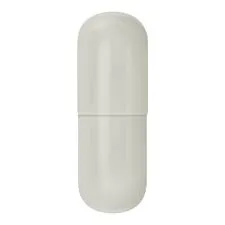
Nov . 28, 2024 02:51 Back to list
Methyl Hydroxyethyl Cellulose Production Process and Applications in the Industry
The Significance of Methyl Hydroxyethyl Cellulose in Modern Industries
Methyl Hydroxyethyl Cellulose (MHEC) is an essential cellulose derivative widely utilized in various industries due to its exceptional properties. As a water-soluble polymer, MHEC is synthesized from natural cellulose sources through chemical modifications, resulting in a versatile compound with numerous applications. This article delves into the production process of MHEC, its outstanding properties, and its critical roles across multiple sectors.
Production Process of MHEC
The manufacturing of MHEC begins with the extraction of cellulose from natural sources, such as cotton or wood pulp. The cellulose undergoes a series of chemical reactions, involving methylation and hydroxyethylation, to achieve the desired chemical structure. During methylation, methyl groups are introduced to the hydroxyl groups of cellulose, while hydroxyethylation involves the introduction of hydroxyethyl groups. The outcome is a highly soluble and stable polymer with customized viscosity and water-retention properties.
To ensure product quality, MHEC production is closely monitored through various tests. The viscosity of the final product is a critical parameter, as it directly influences its performance in end-use applications. By adjusting the degree of substitution and the molecular weight during production, manufacturers can tailor MHEC for specific requirements, making it a highly adaptable ingredient in numerous formulations.
Outstanding Properties of MHEC
MHEC boasts several properties that enhance its suitability for various applications. As a thickening agent, MHEC contributes to the formation of stable dispersions and emulsions, which are crucial in industries like construction, food, and personal care. Its excellent water retention capacity makes it a valuable ingredient in cement and mortar formulations, ensuring optimal workability and bonding properties while minimizing cracking and shrinkage.
Moreover, MHEC exhibits remarkable rheological behavior, allowing it to provide the desired texture in diverse products. The ability to form gels and films makes it an ideal choice in cosmetic formulations, offering a silky, smooth feel and enhancing the stability and appearance of creams, lotions, and gels. Its compatibility with other additives further enhances its utility, positioning MHEC as a go-to ingredient for formulators seeking to achieve desired product performance.
mhec-methhyl hydroxyethyl cellulose factory

Applications Across Industries
MHEC's wide-ranging applicability spans several industries, including construction, food, pharmaceuticals, and personal care. In the construction industry, MHEC is primarily used as an additive in cement and mortar, improving workability and adhesion. It helps retain moisture during the curing process, resulting in stronger structures and preventing cracking.
In the food industry, MHEC serves as a thickener and stabilizer, commonly found in sauces, dressings, and dairy products. Its ability to improve texture and enhance mouthfeel makes it a favorite among food developers striving to create consistent and appealing products. Additionally, MHEC acts as a stabilizing agent in emulsified products, preventing separation and extending shelf life.
The pharmaceutical sector also benefits from MHEC, which is used in drug formulations as a binder, thickener, and controlled-release agent. MHEC's biocompatibility makes it suitable for various pharmaceutical applications, ensuring that medications are delivered effectively and efficiently.
Furthermore, in personal care formulations, MHEC is a key ingredient in cosmetics, providing excellent texture and stability. Its film-forming properties contribute to the long-lasting nature of products such as hair gels and styling aids, benefitting both manufacturers and consumers alike.
Conclusion
Methyl Hydroxyethyl Cellulose is a remarkable polymer with a myriad of applications across diverse industries. Its unique properties, including viscosity modification, water retention, and stabilizing abilities, make it an invaluable ingredient in products ranging from construction materials to food and cosmetics. As industries continue to innovate and demand high-performing materials, the significance of MHEC is likely to grow, cementing its position as a crucial player in the modern manufacturing landscape. The commitment to producing high-quality MHEC will ensure that businesses can continue to rely on this versatile compound to meet the evolving needs of consumers and industries alike.
-
Versatile Hpmc Uses in Different Industries
NewsJun.19,2025
-
Redispersible Powder's Role in Enhancing Durability of Construction Products
NewsJun.19,2025
-
Hydroxyethyl Cellulose Applications Driving Green Industrial Processes
NewsJun.19,2025
-
Exploring Different Redispersible Polymer Powder
NewsJun.19,2025
-
Choosing the Right Mortar Bonding Agent
NewsJun.19,2025
-
Applications and Significance of China Hpmc in Modern Industries
NewsJun.19,2025







